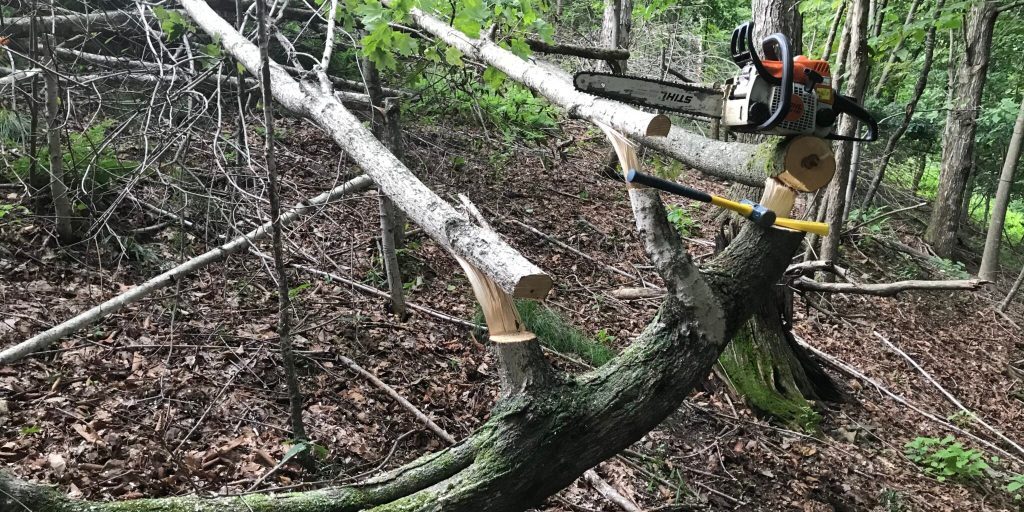In today’s deer hunting culture there seems to be a dramatically increased level of interest in managing hunting properties for quality deer herds and quality deer hunting experiences. Much of this interest is focused on tracts of land that are 60-80 acres on the smaller end, and up to many hundreds or even thousands of acres on the larger end. Many deer hunting landowners and even leaseholders with sizable chunks of land are improving, enhancing, and designing better deer habitat to make their land as attractive and beneficial to deer as possible, to maximize their hunting opportunities. This is a great situation that is a victory for hunters and wildlife alike. However, there are many hunters that own much smaller tracts of land. These landowners often dismiss these small parcels as not being large enough to improve or enhance the habitat, and consequently, the hunting opportunities. Many small properties can become the best piece of ground on the block with observation, a plan, and hard work.

Realistic Goals and Expectations
In my opinion, the most important piece of the puzzle has nothing to do with habitat improvement techniques or hunting strategies. The foundation for success will be laid before ever breaking ground or firing up the chainsaw. Setting realistic expectations and goals will dictate the success or failure of setting up any hunting property. Staying flexible and open-minded will allow those expectations and goals to change as progress is realized. There are many obstacles already in place for small landowners, and unrealistic expectations or goals will ultimately breed frustration and failure. Setting up and developing a property for better hunting is supposed to be fun and rewarding, and it will be if a realistic plan is devised from the beginning.
A landowner must realize that with a small or micro-property, popular catchphrases in the deer management community like “holding deer” or “growing deer” are just not realistic expectations or goals. Deer need plenty of space to assure appropriate resources for each segment of the population throughout the course of an entire year. No matter how hard one tries, it is highly unlikely we will be able to create the sheer volume of preferred habitat needed to keep deer living entirely within the confines of a small property, let alone persuade them to spend the majority of their time within those borders. Focusing on the improvements that will put the deer on or passing through your property during daylight hours, specifically during hunting season and you will have the opportunities needed to achieve your goals.

Devise a Plan and Stay Flexible
The simplest approach to improving hunting on small and micro-properties is to make the property as attractive to deer during the hunting season as possible. Focusing time, effort, and money on improvements that are only or mostly beneficial to deer outside of the hunting season is relevant and can absolutely come into play for small properties, but if the focus is to be on hunting then that is where the effort is better served, at least in the beginning stages. Making a property as attractive as possible to deer during hunting season may require several different improvement techniques and strategies. A landowner/hunter needs to know how to identify the local deer herd’s needs during the fall and winter.
The best way to figure out what the local deer need during hunting season is through careful observation. Arguably, the most important observation is how the property fits into the local deer herd’s critical hunting season habitat requirements and subsequent pattern of movements. Small properties are, by default, subject to influencing factors beyond their borders, much more so than larger parcels. Often times those factors can come from the immediately adjacent properties, and other times they may come from properties beyond those that are right next door. Those factors can be in the form of habitat, terrain, hunting pressure, and land use.

It is critically important to understand what role your property currently plays in the daily lives of the local whitetails and how that movement flows across the broader landscape beyond your own borders. Once these key features are identified, a plan can be put in place to manipulate and enhance the habitat to maximize the hunting potential of the property.
I have found that it is best to develop a plan that can be carried out in phases over a period of time. This can allow you to evaluate the effectiveness of a given technique, and provide you with time to respond to unforeseen circumstances. It is imperative to stay flexible and continue careful observation and scouting. It is possible for habitat manipulation to create an unforeseen result. Recognizing these unintended patterns and making the necessary changes or tweaks to address the changes can be the difference between success and frustration.
Habitat manipulations and improvements are more of a marathon than a 40 yard dash. Many techniques can produce the desired effects in a matter of a few hours, but many others also require several years before the maximum benefit can be realized. A small landowner/hunter that can set realistic goals, use scouting and observation, and devise a plan with flexibility will have a successful and rewarding hunting experience

-Phil Holcombe

